Lernen Sie Helmholtz-Wissenschaftlerinnen und -Wissenschaftler kennen, die einen Gastforscher oder eine Gastforscherin für einen kurzfristigen Forschungsaufenthalt in ihrer Gruppe willkommen heißen möchten. Hier erfahren Sie, an welchen Projekten die Forschungsgruppen derzeit arbeiten, wie Ihr Beitrag dazu aussehen kann und was Sie von den spezifischen Forschungsansätzen lernen können.
Helmholtz-weite Kooperationen möglich
Wenn Sie einen passenden Host Supervisor suchen, beachten Sie bitte: Sie können zu diesem Zweck auch andere Wissenschaftlerinnen und Wissenschaftler (in der Regel PIs oder Head of Divisions) an den 18 Helmholtz-Zentren kontaktieren und mit Ihnen eine Teilnahme am Helmholtz Visiting Researcher Grant oder am HIDA Trainee Network vereinbaren. Die hier aufgeführte Liste stellt lediglich eine Auswahl von möglichen Hosts dar.
Eine Übersicht der Helmholtz-Zentren und der jeweiligen Forschungsbereiche finden Sie hier:
Helmholtz-Betreuerinnen und -Betreuer
Lernen Sie hier einige potentielle Gastgeberinnen und Gastgeber an verschiedenen Helmholtz-Zentren kennen und erfahren sie mehr über deren jeweilige Data Science-Forschung durch einen Klick auf die Karten.
Bitte beachten Sie: Kontaktieren Sie Ihren potenziellen Betreuer oder Ihre potenzielle Betreuerin bitte vorab per E-Mail, um ein Forschungsprojekt vorzuschlagen und zu besprechen. Reichen Sie erst nach dieser Klärung Ihre Bewerbung ein.
Wenn Sie Fragen haben, senden Sie bitte eine E-Mail an: hida@helmholtz.de
Sie möchten selbst gerne Helmholtz-Gastgeber werden und suchen nach Unterstützung für Ihr Forschungsprojekt? Dann wenden Sie sich ebenfalls an die oben genannte E-Mail Adresse.
Deutsches Krebsforschungszentrum - DKFZ
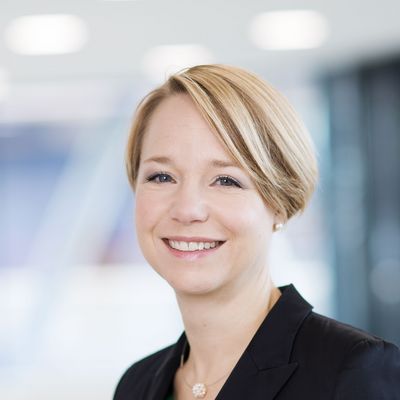
Stella Autenrieth
Dendritic Cells in Infection & Cancer
Ansprechpartner

Short summary of your group's research: Our research group is interested in elucidating the role of different DC subpopulations, their development and basic function in immune activation by bacterial infections, inflammation, and cancer to improve the basic understanding of DC function in disease but also the potential of DCs as targets for therapeutic intervention. Another focus of our research group is the phenotyping of immune cells using spectral flow cytometry. This allows the detailed characterization of all immune cells in the blood and tissues of patients before and during therapy with the goal of identifying cell populations or biomarkers that can predict therapy response.
What infrastructure, programs and tools are used in your group? The main techniques are spectral flow cytometry and scRNA sequencing. With spectral flow cytometry about 40 proteins that are expressed on or in cells can currently be determined simultaneously at the single cell level. We use tools like OMIQ for flow cytometry data and R for scRNA data analysis.
What could a participant of the HIDA Trainee Network learn in your group? How could he or she support you in your group? We offer insights into single cell analysis of immune cells especially how bacterial infections modulate the dendritic cell development. We hope to get support regarding the molecular mechanisms responsible for the infection-induced impaired dendritic cell development by analyzing our scRNA seq & spectral flow cytometry data.

Oliver Jäkel
Physics in Radiation Oncology
Ansprechpartner

Short summary of your group's research: The division of medical physics in radiation oncology at DKFZ comprises multiple research groups, which cover all steps of the radiation treatment chain. We apply machine learning for improving innovative radiotherapy techniques using photons and ion beams. This includes technical developments, improvement of patient-oriented workflows as well as treatment response analyses.
In particular, we focus on the following topics:
1. Image-based patient and motion modeling,
2. Mathematical Methods to optimize physical and biological treatment parameters and dose distributions,
3. Treatment Outcome Analysis & Prediction (Dosiomics & Radiomics),
4. Analysis of molecular and imaging data from preclinical biological studies.
What infrastructure, programs and tools are used in your group?
• Latest generation of radiotherapy treatment machines for image-guided radiotherapy (Ethos, MRLinac, particle therapy)
• Access to data from imaging modalities: MRI, CT, PET
• IT Hardware: Workstations & Servers for AI workflows, OpenStack Computing Cloud
• IT Software: Commercial and Open-Source Treatment Planning and Image Processing Software
• Various series of seminars, lectures and courses
• Close collaboration with data scientists, medical physicists, radiation oncologists, radiologists and biologists
What could a participant of the HIDA Trainee Network learn in your group? How could he or she support you in your group?
Participants of the HIDA Trainee Network will get
• Access to strong interdisciplinary and translational work
• Insights into the latest radiotherapy and imaging developments
• In touch with applications of machine learning to medical (radiotherapy and imaging) data
Candidates could support in data analysis, development of new AI methods and bringing new ideas by translating solutions from a different research field to medical physics.
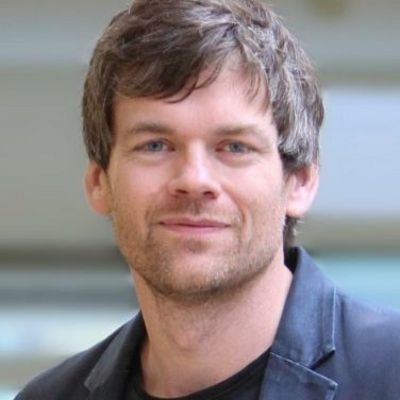
Klaus Maier-Hein
Medical Image Computing
Ansprechpartner

Short summary of your group's research: The Division of Medical Image Computing (MIC) pioneers research in machine learning and information processing in the context of image data analytics. We pursue cutting-edge developments at the core of computer science, with applications in but also beyond medicine. We are particularly interested in techniques for semantic segmentation and object detection as well as in unsupervised learning and probabilistic modelling.
What infrastructure, programs and tools are used in your group?
- Python Software Framework / Pytorch / Phabricator
- A GPU cluster at DKFZ tailored to specific needs, ranging from nodes with RTX 2080ti all the way up to Nvidia’s DGX systems
- The DKFZ has an Openstack cluster in which you can instantiate virtual machines for CPU heavy workloads.
What could a participant of the HIDA Trainee Network learn in your group? How could he or she support you in your group? At MIC we pursue cutting-edge developments at the core of computer science, with applications in but also beyond medicine. We believe a sophisticated research software system and infrastructure are key for methodological excellence, for example to facilitate highly scalable data analysis in a federated setting. In cooperation with numerous (clinical) partners, we work on the direct translation of the latest machine learning advances into relevant clinical applications. Depending on the specific interests of the participant of the HIDA training exchange many interesting and challenging aspects could be addressed. Please find a list of ongoing research project in the department on our website in the "research" section.
Deutsches Elektronen-Synchrotron - DESY
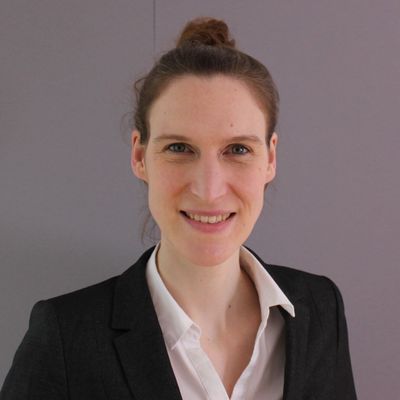
Annika Eichler
Intelligent Process Controls
Ansprechpartner

Short summary of your group's research:
Intelligent Process Controls (IPC) is a subgroup of the Machine Beam Controls (MSK) group at DESY, pushing forward innovative research for the autonomous operation of particle accelerators at the interface of machine learning, control. For this using reinforcement learning and other cutting-edge optimization techniques. IPC is also engaged in developing advanced feedbacks and enhancing fault diagnosis and anomaly detection through machine learning.
What infrastructure, programs and tools are used in your group?
The participant will have access to high-performance computing infrastructure at DESY. As programming languages, we mainly use Python.
What could a guest researcher learn in your group? How could he or she support you in your group?
As an interdisciplinary research team of experts from control theory, computer science and physics, a participant of the HIDA Trainee Network can gain experience in different directions and support many different applied projects. Here data mining projects as for anomaly detection are possible but also control and optimization problems. For the latter, we strongly encourage the Trainee to participate in shifts and applying the developed methods to the accelerator.
Marek Kowalski
Astroparticle physics and the IceCube experiment
Ansprechpartner
Short summary of your group's research:
We are performing high energy neutrino astronomy using the observatories IceCube and RNO-G, as well as as the future IceCube-Gen2. Furthermore, we are working on optical surveys such as the Zwicky Transient Facility and the UV satellite ULTRASAT. The joint exploitation of the data enables new routes in multimessenger astrophysics. A key tool to combine the multimessenger data is AMPEL, a software framework developed by my research group to analyses realtime time series.
What infrastructure, programs and tools are used in your group?
AMPEL, IceCube, ZTF
What could a guest researcher learn in your group? How could he or she support you in your group?
Inference of galaxy properties and properties of astronomical transients using machine learning applications on multi band time series and catalog data.
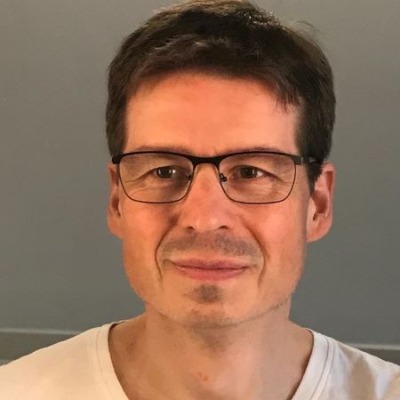
Jochen Küpper
Controlled Molecule Imaging
Ansprechpartner

Short summary of your group's research: We develop innovative methods to obtain full control over large molecules and nanoparticles. These methods and the created controlled samples are exploited in fundamental physics and chemistry studies to unravel the underlying mechanisms of chemistry and biology by watching molecules at work. This is coupled with advanced experimental control and data acquisition software, including on-the-fly data reduction, as well as theoretical and computational physics – both utilizing machine learning approaches for improved performance.
What infrastructure, programs and tools are used in your group?
Have a look on our website.
What could a participant of the HIDA Trainee Network learn in your group? How could he or she support you in your group? Machine learning in theoretical physics and quantum chemistry and in real-time data reduction – benefit from current expertise and improve our approaches.

Thomas White
Scientific Computing (Photon Science)
Ansprechpartner

Short summary of your group's research: We are developing computational tools for processing large crystallographic datasets consisting of many hundreds of thousands of individual frames. Recently, we are moving towards real-time data processing, with the aim of making the data analysis step "disappear" - becoming part of the data acquisition process. Our main product embodying this work is the free and open source "CrystFEL" software package.
What infrastructure, programs and tools are used in your group?
Infrastructure: Gitlab, DESY "Maxwell" cluster
Tools: HDF5, SLURM, GSL, OpenCL, ZeroMQ, MessagePack, CMake, Meson, GTK and more
Languages: C/C++, Python, Lisp and others
What could a participant of the HIDA Trainee Network learn in your group? How could he or she support you in your group? As well as working with large-scale accelerator-based photon facilities (PETRA III and European XFEL, plus other facilities worldwide), you would gain insight into developing a widely-used (>100 worldwide users) domain-specific software package. For instance, how to balance the implementation of cutting-edge scientific methods with other considerations such as stability and reliability. During your stay, you could contribute (for example) by experimenting with a new way of processing data, speeding up existing processing methods, or implementing one of the many requested features in CrystFEL.
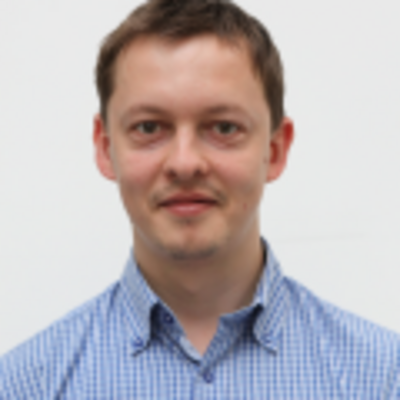
Andrey Yachmenev
Controlled Molecule Imaging
Ansprechpartner

Short summary of your group's research: Our group is working on the development of computational techniques and high-accuracy simulations to improve our knowledge of the nuclear dynamics and spectra of molecules interacting with external electromagnetic fields. We're also working on ways to simulate ultrafast imaging experiments like photo-electron circular dichroism and laser-induced electron diffraction. We have recently begun to investigate various machine learning tools in applications to our problems, which range from solving differential equations to developing effective representations for molecular potential energy surfaces, as well as analyzing and inverting experimental photoelectron imaging data.
What infrastructure, programs and tools are used in your group? HPC, scientific computing and machine learning tools implemented in Python and Julia.
What could a participant of the HIDA Trainee Network learn in your group? How could he or she support you in your group? You will develop or expand your grasp of many theoretical, computational, and experimental aspects of quantum molecular dynamics, high-resolution spectroscopy, photoelectron imaging, and machine learning applications to these challenges. You may learn more about software development techniques by contributing into development of open source software for molecular dynamics simulations.
We offer highly exploratory projects in development of neural networks for efficient solution of Schrödinger equation for nuclear motion and photo-electron dynamics, mathematical analysis of these approaches, and analysis of experimental photoelectron imaging data. We welcome applicants from a variety of disciplines with some background in machine learning and can offer and adapt a range of possible projects.
Deutsches Luft- und Raumfahrtzentrum - DLR
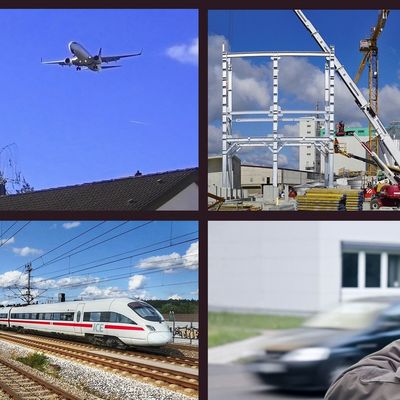
Susanne Bartels
Sleep and Human Factors Research
Ansprechpartner

Three-sentence summary of your group's research: We investigate how air, rail and road traffic noise affect sleep, cognitive performance and annoyance. We conduct both laboratory studies as well as field studies in residents affected by transportation noise and derive exposure-response relationships for awakening probabilities and annoyance that are used to develop protection concepts for the affected population. Noise effects are being studied in healthy adults as well as in vulnerable individuals, e.g. children and elderly people.
What infrastructure, programs and tools are used in your group? To collect data on sleep quality and cardiovascular parameter, we apply polysomnography incl. EEG, ECG, pulse oximetry and actigraphy. Noise exposure data are obtained via acoustic measurements (e.g. by means of class-1 sound level meters). Survey data are obtained via postal or online surveys using, for instance, LimeSurvey. For data management and analysis, we use e.g. SOMNOmedics DOMINO, Matlab, R-Studio and SPSS as well as self-programmed and customized tools based on Matlab and LabVIEW.
What could a guest researcher learn in your group? How could he or she support you in your group? By joining our group, you could learn about the manifold effects of environmental noise on human health and their underlying mechanisms. You would benefit from our expertise in data collection in controlled experimental designs in the laboratory and the field as well as in surveys. Furthermore, you could increase your knowledge in sleep measurement techniques, e.g. polysomnography, and apply your skills (incl. machine learning skills) in the analysis of cardiovascular reactions to noise (e.g. regarding heart rate variability, pulse transit time) and/or noise-induced reactions in sleep (e.g. vegetative-motoric reactions, identification of EEG arousals).
Expertise in bioengineering, psychology, medicine, biology, and related disciplines, with a special emphasis on skills in advanced statistical analyses, data visualization and machine learning are very welcome. We are looking forward to an open exchange of ideas and methods for the in-depth investigation of noise impacts on humans.

Andrés Camero Unzueta
EO Data Science
Ansprechpartner

Three-sentence summary of your group's research: The Helmholtz AI consultant team @ DLR provides expertise from Earth observation, robotics and computer vision and an HPC/HPDA support unit.
The team covers a comprehensive package of AI-related services. It is supposed to support both projects within LRV and cooperative projects with other Helmholtz centers. On the other hand, the EO Data Science Department develop AI methods for Earth observation data to tackle societal grand challenges.
What infrastructure, programs and tools are used in your group? Coding is mainly done in Python and C/C++, using the most popular optimization and ML/DL frameworks. We have access to GPU servers.
What could a guest researcher learn in your group? How could he or she support you in your group? We offer a broad range of AI expertise, with a strong focus on Earth observation applications. We are looking for people with knowledge in machine learning, optimization and/or image processing to apply their skills to tackle societal grand challenges using Earth observation data.
Eva-Maria Elmenhorst
Sleep and Human Factors Research
Ansprechpartner
Three-sentence summary of your group's research: We study the homeostatic and circadian processes that regulate the quality, duration, and timing of sleep, as well as cognitive performance. Data are collected both in the laboratory and in the operational environment, e.g. the cockpit. We study factors like acute and chronic sleep loss, workload, stimulants, circadian misalignment, and inter-individual differences in the vulnerability to sleep loss. We are also interested in cognitive and operational performance in extreme environments, e.g. space, and the influence of a multitude of stressors, such as hypoxia, hypercapnia, simulated microgravity (head down tilt bedrest), or microgravity during parabola flights.
What infrastructure, programs and tools are used in your group? During our studies, we gathered a rich multitude of data under extreme conditions (fatigue, hypoxia, hypercapnia, microgravity): behavioral responses in cognitive tasks and simulations, eye tracking data, physiological measurements (polysomnography, ECG, EEG), actigraphy, fMRI and PET.
What could a guest researcher learn in your group? How could he or she support you in your group? Guest researchers can learn sleep measuring techniques (including polysomnography), circadian analysis techniques (including mathematical modeling of circadian and sleep-wake regulation), eye-tracking techniques, and be part of large laboratory (e.g., bedrest studies) and field studies (e.g., assessing fatigue and cognitive performance in pilots). We welcome expertise in bioengineering, psychology, medicine, biology, and related disciplines, with a special emphasis on skills in advanced statistical analyses and machine learning.
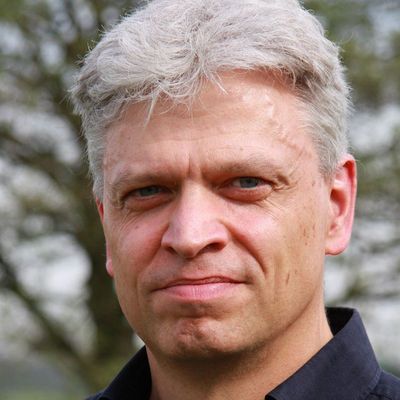
Andreas Gerndt
Visual Computing and Engineering
Ansprechpartner

Short summary of your group's research: The mission of the DLR Institute for Software Technology is research and development in software engineering technologies, and the incorporation of these technologies into DLR software projects. The department of Software for Space Systems and Interactive Visualization investigates and develops methods for robust and reusable software solutions for the design and operation of space missions as well as for interactive visualization applications.
What infrastructure, programs and tools are used in your group? Besides modern computer systems, we are using well-equiped laboratories for flight software integration into onboard sytems, for the investigation of immersive software in virtual environments, and for evaluation of software solutions into mixed and extended reality. This includes large immersive virtual reality powerwall displays, multi-pipe multi-touch display walls, and fully embedded systems development equipement. Additionally, we are operating a software laboratory for highly agile joint software development sessions. All systems have access to institute server for high-performance computing, cluster solution development, and high-end visualization approaches.
What could a participant of the HIDA Trainee Network learn in your group? How could he or she support you in your group? We are looking for excellent scientists for all activities in the research groups of the department: robust and resilient onboard software, formal verification of spacecraft design, digital transformation in the space domain, in-situ data processing and visualization on high-performance computers, topology-based data analysis for large-scale datasets, visual data analytics, virtual reality, mixed reality, extended reality, human factors and user studies, applications in DLR's domain like space, aeronautics, transportation, climate change, and more.
Annette Hammer
Energiesystemanalyse
Ansprechpartner
Three-sentence summary of your group's research
The Energy Meteorology Group has a long experience in solar forecasting, pv-modelling and satellite retrieval. We operate a sensor and camera network in North West Germany.
What infrastructure, programs and tools are used in your group?
python and pytorch
What could a guest researcher learn in your group? How could he or she support you in your group?
You will use meteorological data, camera images, satellite images and photovoltic power measurements. You will learn, how we model PV power from these input data. You will support us in forecasting PV-power-production for the next minutes and hours form these input data.
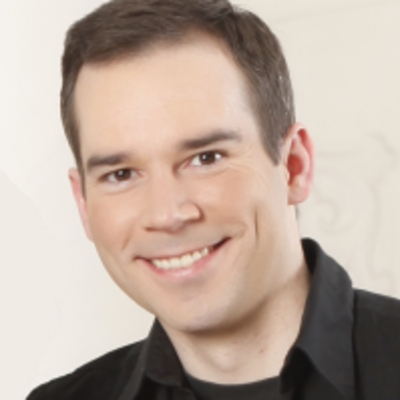
Ronny Hänsch
SAR-Technology
Ansprechpartner

Short summary of your group's research: The SAR Technology department addresses everything from building up the sensor (currently the multi-frequency fully polarimetric F-SAR), planning and executing measurement campaigns, SAR processing (i.e. focusing, geocoding, image enhancement), up to the analysis of the final image product. The Machine Learning team mainly focuses on the last part, i.e. using machine learning to derive higher level information (e.g. semantic maps, geo-/bio-physical parameters) from the SAR images. Topics of relevance are single-image superresolution, denoising (despeckling), ensemble learning, deep learning, image synthesis, semantic segmentation, semi-/weakly-/self-supervised learning, XAI, out-of-distribution/anomaly detection, etc.
What infrastructure, programs and tools are used in your group? Programming is mostly done in python or C++; deep learning developments either in PyTorch or Tensorflow. We do have access to GPU servers.
What could a participant of the HIDA Trainee Network learn in your group? How could he or she support you in your group? We offer insights in all aspects of SAR, including hardware, focussing, processing, and analysis, combined with a profound knowledge in machine/deep learning, and applied to interesting and highly relevant applications (e.g. forest monitoring, urban growth, development of glaciers, etc.). We are looking for people with knowledge in machine/deep learning and/or image processing to apply their skills to a very exciting and powerful type of image data, i.e. SAR, or to use machine learning and SAR to solve relevant tasks in emerging applications.
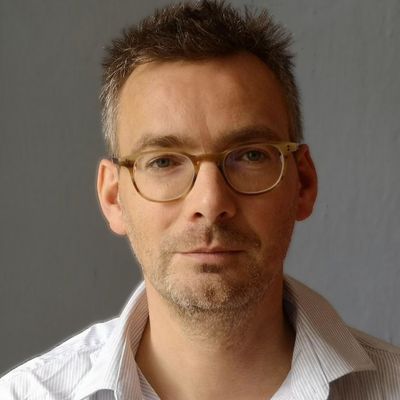
Peter Jung
Real-Time Data Processing
Ansprechpartner

Three-sentence summary of your group's research: The new SensorAI group in the OS-EDP department will focus on challenging data science and sensing problems related to sensors and optical instruments and imaging devices. This includes the design, development and evaluation of data aggregation methods, calibration and recovery algorithms, and high-dimensional data analysis. Recent theoretical advances in sensing (compressed sensing, low-rank recovery and super-resolution) and AI methods (from deep learning to neural-augmented/unfolding algorithms, PINNs and more recent AI architectures) will be used to address inverse problems in signal processing and physics.
What could a guest researcher learn in your group? How could he or she support you in your group?
What could a guest researcher learn in your group? How could he or she support you in your group?:
Guest researchers are invited to cooperate on topics with the SensorAI group in the EDP department. This includes (but is not limited to):
1) AI for solving inverse problems in signal processing, physics and data science.
2) deep learning, neurally-augmented/unfolding algorithms
3) uncertainty quantification
4) Quantum computing
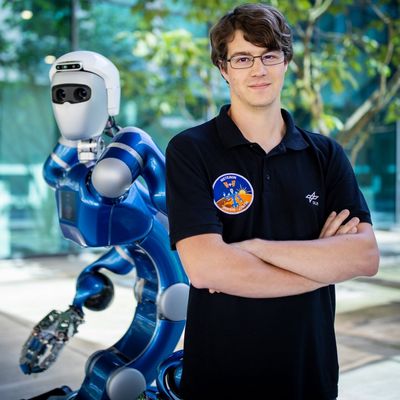
Daniel Leidner
Autonomy and Teleoperation
Ansprechpartner

Short summary of your group's research: The Institute of Robotics and Mechatronics, Department of Autonomy and Teleoperation explores all aspects of robot autonomy. This includes autonomous operation with AI-based approaches to task and motion planning, as well as teleoperation modalities for remote operation under human supervision with intuitive interfaces. All of this is embedded in fault-tolerant autonomy architectures that enable resilient decision making, inspection, monitoring, and error handling. The design of software components for embedded and distributed computing platforms enables the use of these methods for space applications under hard real-time conditions.
What infrastructure, programs and tools are used in your group? To increase the autonomy of robotic systems we investigate techniques to generate robot programs from logical task descriptions (e.g. PDDL). The robot Rollin Justin (see picture) is one of several demonstration platforms for these tasks. The software stack of the robot is based on different modules developed in Python, C++, and Simulink. We develop model-based techniques for decision making leveraging real-world robot telemetry as well as semantic information inferred through physics-simulations (e.g. Gazebo). To control the robot (e.g. from aboard the ISS) intuitive control modalities are developed such as shared control and supervised autonomy.
What could a participant of the HIDA Trainee Network learn in your group? How could he or she support you in your group? We offer visiting researchers the opportunity to participate in the development of software for some of the most advanced robots in the world. We utilize advanced programming techniques for use under real-time and non-real-time conditions. This includes integrating complex control strategies for compliant robots with AI-based reasoning methods, developing physics-based reasoning for error handling, and developing multi-modal robot interfaces in the context of astronaut-robot collaboration. Visiting researchers will learn to apply an agile, concurrent software engineering process to develop software components for space-qualified robots.

Anne Papenfuß
Systemergonomie
Ansprechpartner

Three-sentence summary of your group's research: The Human Factors department supports the development of advanced concepts and assistance systems for pilots, air traffic controllers and control center personnel in terms of human-centered automation. It is cross-sectionally manifested in the Institute of Flight Guidance and supports the specialist departments in the early concept phases. An interdisciplinary team of engineers, psychologists and computer scientists plans and manages validations with operators in real-time simulation, field trials and flight tests. In general, it is important to take equal account of improving the individual human-machine cooperation and the cooperation between the on-board and ground-based systems and the people involved in them.
What infrastructure, programs and tools are used in your group? - Virtual environments, High-fidelity simulators of Air Traffic Control working positions, aircraft cockpits, VR-glasses
- Physiological measurement tools like EEG, fNIRS, EKG
- Eye tracking
- Speech recognition
What could a guest researcher learn in your group? How could he or she support you in your group? - A participant could learn about data representing human factors in automated systems, as well as how data are collected in controlled experimental designs and used for informed decisions about system design.
- A participant can furthermore learn about research topics on human-machine interaction and cooperation in the field of aviation.
- Partly automated data processing/data analysis like detection of patterns and anomalies in heterogenous data (e.g. by AI)
- Development of analysis and visualization concepts
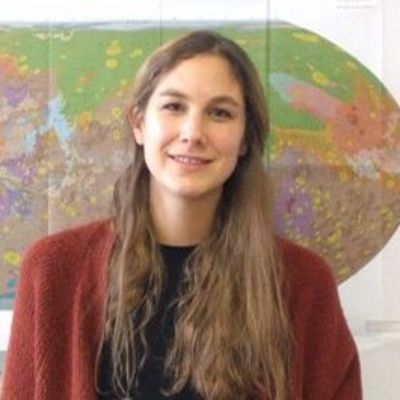
Kristin Rammelkamp
Terahertz and Laser Spectroscopy
Ansprechpartner

Short summary of your group's research: In the DLR junior research group “Machine learning for planetary in-situ spectroscopic data”, we investigate data measured in the laboratory but also on Mars by instruments like ChemCam (NASA’s Mars Science Laboratory). We train and evaluate supervised algorithms for the prediction of elemental abundances in rocks and soils, and for the classification of mineralogical classes. Additionally, we use unsupervised methods for pattern recognition in large spectroscopic datasets and aim also for physics informed machine learning based simulations of spectra from geological targets.
What infrastructure, programs and tools are used in your group? For the machine learning part of our research, we work with frameworks like PyTorch, Sklearn etc provided in python. We have laboratory instruments that can be used to measure spectroscopic data, also in simulated martian and vacuum atmospheric conditions. The spectroscopic techniques we are mainly working with are laser-induced breakdown spectroscopy (LIBS) and Raman spectroscopy.
What could a participant of the HIDA Trainee Network learn in your group? How could he or she support you in your group? You can learn several aspects in our group starting with the basics of the spectroscopic methods and the nature of the data, especially with regard to planetary in-situ exploration. Regarding machine learning, you can learn how to optimize models trained with spectroscopic data for different purposes, such as regression and classification. Furthermore, you can benefit from our experience in real planetary mission involvements. We are looking forward to learning from your machine learning experience for other applications and how this could be adapted to spectroscopic data. In particular, we are interested in explainability of machine learning models in order to better understand the predictions and performance of them and in ways to include physical knowledge in the training process.
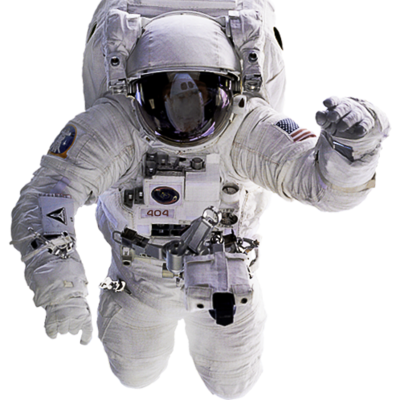
Claudia Stern
Klinische Luft- und Raumfahrtmedizin
Ansprechpartner

Three-sentence summary of your group's research: Long duration human spaceflight missions create medical support challenges for eye changes, which can occur in nearly two-thirds of astronauts. To address these challenges, we are developing artificial intelligence applications to support crew members in monitoring their eyes. These applications have the potential to be used for crew medical support aboard the International Space Station, and beyond.
What infrastructure, programs and tools are used in your group? For the machine learning component of our research, Python, convolutional neural networks, Tensorflow, GPU servers, and computer vision tools are used to conduct our analyses. To collect the raw image and video data used in our analysis, we use ophthalmology imaging tools (e.g., fundoscopy, optical coherence tomography (OCT), etc.) commonly used in clinical practice worldwide. You would require access to a development environment (e.g., VSCode, Pycharm, etc.), understanding of and adherence to data security and ethics standards, and a modern smartphone/tablet.
What could a guest researcher learn in your group? How could he or she support you in your group? In our group, you could learn about the eye changes astronauts experience during long duration spaceflight, especially with regard to the retina. You could advance your machine learning skills to optimize regression, classification, and object detection models trained with our image and video data. In particular, we are interested in and open to new ways to improve the predictions and performance of our networks and models. By joining our group, you could benefit from our experience in aerospace medicine, human spaceflight, and International Space Station research, and we would benefit from your expertise in computer vision for human medical data. We would look forward to the possibility of working together.


